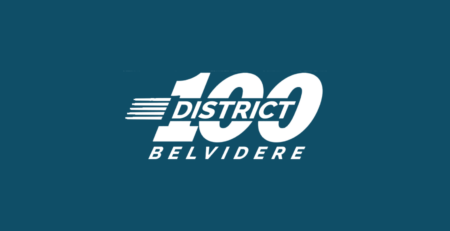Before working at Possip, I worked at Procter & Gamble in Finance for 13 years. I had a number of roles while there including as the leader for the forecasting and budgeting process of Tide the Company’s largest Brand with over $8B in revenue. I held this role during the recession period in 2009 and learned a lot about strategic budgeting during volatile times.
The thing that has stuck with me the most from that role was something my boss at the time told me
“The only thing you know for certain about your financial predictions is that they are wrong. How wrong they are and minimizing the impact of being wrong is a big part of it.”
Why that statement was so helpful to me was that it freed me from having to be ‘right’ about everything in my forecast and focused me on managing the uncertainty.
Most states are facing significant losses in income tax and sales tax Revenue. Schools make up a large part of States’ budgets and will see an impact on their funding based on this loss in revenue.
Local Property Tax Revenue is also at risk as people default on payments.
Enrollment is a big UNKNOWN (Might increase as people have less money for private school. Might decrease as people are afraid to have their children return to school)
With these factors under consideration, many school districts are estimating up to ~20% reduction in budget.
While funding decreases, costs are going to increase to meet CDC guidelines for re-opening schools.
This all leads to a challenge while budgeting this year.
5 Tips for Maximizing Impact Through Strategic Budgeting
Tip #1: Priorities
Articulate your organization’s values & priorities. Get input from your community on what they see as priorities.
The old adage goes “show me your budget and you show me your values”. This is one of the most important steps an organization can take. Knowing what the key values & priorities are will help know what spending needs to be protected and what spending is more flexible.
Community & Stakeholder input to this process is critical. Budgets are public records and people do look to see where money is being spent and will want to see that it aligns with the values that they see as important.
Articulating these before money is associated with line-item spending can be helpful. As you get further along in the budgeting process, citing the articulated values & priorities can help remind everyone why choices are being made the way they are.
Including how you are measuring impact or what the main non-financial goal is in your budget also helps to ground everyone in the organization’s mission. If debate comes up about a spending item, ask the question “how does this help us achieve our mission?”
Tip #2 Variables
Split spending items into fixed, variables, and choices.
Go through the budget and identify what are fixed costs, what are variable costs, and what are choices. We often talk about this as controllable and uncontrollable budget items.
Within both fixed and variable costs, there are items that are choices and items that are not. If you are in year 3 of a 5 year contract, it is not worth spending time on that budget item. Focus on areas where there is a decision to be made.
Variables are items that may change based on time or # of students or how cold/warm it is outside. Whereas fixed costs, are generally a set amount for a full year (whether it is used a lot or a little, etc).
For variables, not only do you have to decide whether it is the right choice but what ranges are there on the variable. Sometimes based on specifics in contracts or timing of decisions, items that are theoretically variable may not actually be variable.
Spending money sometimes saves money. Sometimes that’s short term capital investments to save lease or rent expenses or sometimes that’s investing in services or technologies to free up staff to deliver other increasing responsibilities.
Tip #3 Scenarios
Create pathways to achieving your budget.
There are lots of approaches to scenario planning and many of them use probability adjustments which can be helpful to account for some level of uncertainty in the budget. There are a few problems I have seen in using this approach. One, is that they are often compounding and sometimes as much time is spend debating the probability % as is verifying the initial input. There is also the probability of it occurring but if it occurs it is at 100% of spend.
I prefer to create actual scenarios to see how many different ways I can get to our desired budget. Laying out actual scenarios helps people conceptualize what might happen. If I get lots of ways to meet our goals, then I feel good. If there’s only one path and everything has to go right to get there, then I don’t feel so good and we need to revisit the plan.
Once you have laid out some paths, look at what could be trigger points to make decisions. What does that look like? Maybe we don’t have enough information today to decide about some spending element that will happen next Spring but if we hit a particular milestone, we can then make the decision.
I have also seen a lot of organizations doing shorter budgeting cycles to help mitigate the rapidly changing world. If it’s impossible to predict what next winter looks like, maybe it’s better to just budget for the fall and budget for the winter when more information is available.
Play with time frames and decision triggers during the budgeting process.
Tip #4: Feedback and Benchmark
Seek out best practices and use ‘peer review’.
Benchmarking with other similar organizations is always a critical step when I am building a budget. Especially in this environment, I would think about calling up a similar school or district and see how they are planning to approach their budget. What are they assuming the impact to transportation is? Ask some of the key questions that you are struggling with. People like to help and be seen as experts.
I also like to use the ‘peer review’ model. Let someone else look through the details. What jumps out at them? What questions do they ask? This can either be someone else in your organization, a board member, or community volunteer. Many corporations encourage their employees to volunteer (including the big 4 accounting firms). Reach out to a local business and see if they have someone who’d be willing to help.
Finally, get input from your broader community on the budget. Have public budget hearings, meet with your main stakeholder groups.
Tip #5: Resources
Utilize extra resources available at this time.
While this time is incredibly challenging and poses a lot of risks, there have also been a number of organizations that have stepped up to help.
Search out grants – many organizations shifted grant focus to help people addressing the COVID-19 crisis.
In-kind donations have also been available. When restaurants were closed, a lot of food suppliers had a surplus and were helping schools feed families.
People – there are a lot of people who are looking for ways to give back during this time and can’t do so physically. But they could help support remotely.
Think of ways that the community can still support the work of your organization during this time.
If you’d like to discuss about strategic budgeting, email hello@possip.com






